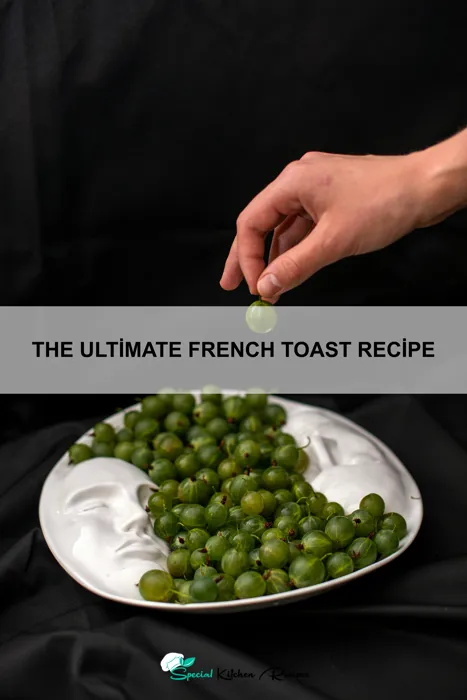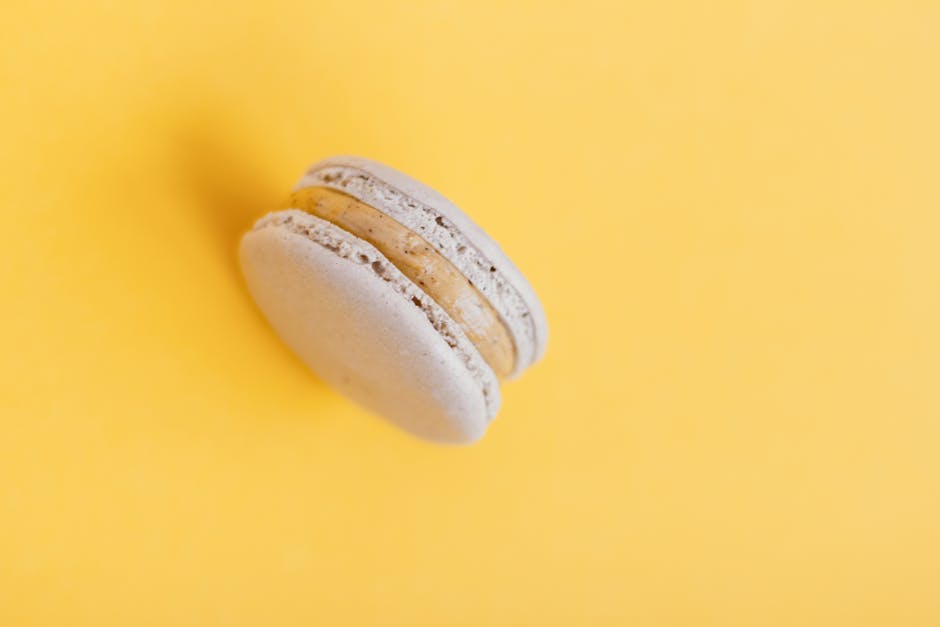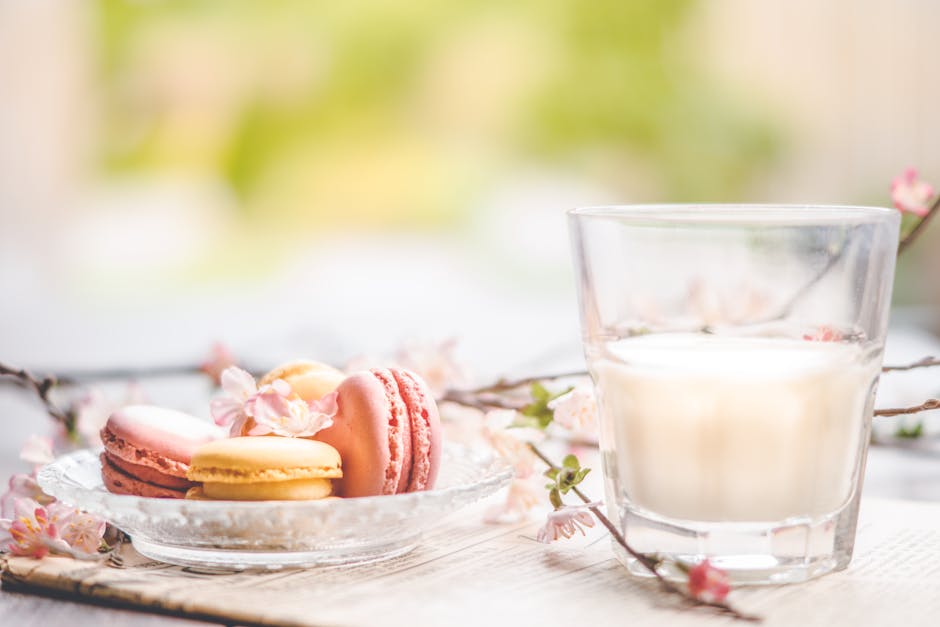Prepare to embark on a culinary journey with The Ultimate French Toast Recipe, a dish whose seemingly simple preparation belies a rich and fascinating history. While pinpointing the exact origin is impossible, French toast’s story is woven into the tapestry of resourceful cooking across various cultures. Many believe its roots lie in ancient Roman times, with accounts of soaked bread being fried in honey and spices. However, the dish evolved and gained prominence in medieval Europe, where stale bread, a common household staple, was repurposed into a delicious and satisfying meal. Think of it as the original waste-not-want-not recipe – a testament to culinary ingenuity.
The term French toast itself is a bit of a misnomer. While the dish enjoys widespread popularity in France, its exact connection to the country is debated. Some historians suggest the name emerged from the French word pain perdu, meaning lost bread, highlighting the resourceful nature of its creation. Interestingly, similar variations of this breakfast staple exist across the globe, from torrijas in Spain to gyufas in Hungary, showcasing its universal appeal and adaptability. A recent survey indicated that over 75% of American households consume French toast at least once a month, highlighting its enduring popularity in modern cuisine.
Beyond its deliciousness, French toast holds significant cultural importance. It’s a breakfast staple across many countries, frequently served during holidays and special occasions. Its versatility allows for countless variations – from classic cinnamon-sugar dusted slices to more extravagant creations featuring fruits, nuts, and even savory additions. It’s a dish that transcends generations, uniting families around the breakfast table and evoking feelings of nostalgia and comfort. This recipe aims to capture the essence of French toast, providing you with the tools to create a truly exceptional version, whether you’re a seasoned chef or a beginner in the kitchen. Get ready to experience the magic of perfectly golden-brown, custardy French toast, steeped in history and bursting with flavor.
Ingredients and Measurements
This recipe yields approximately 6-8 slices of decadent French toast, depending on the size of your bread. We recommend using challah, brioche, or Texas toast for the best results, as their richness complements the custard beautifully. However, feel free to experiment with your favorite bread type!
Bread: 6-8 slices of challah, brioche, or Texas toast, about 1 inch thick. Important: Stale bread works best! If using fresh bread, let it sit out uncovered for at least 30 minutes to allow it to firm up slightly. This prevents overly soggy French toast. Day-old bread is ideal.
Eggs: 4 large eggs. Recommendation: Use fresh, high-quality eggs for the richest flavor and best texture. Room temperature eggs whisk more easily and create a smoother batter.
Milk: 1 cup whole milk. Professional Tip: Whole milk provides the creamiest texture, but you can substitute with 2% or even buttermilk for a tangier flavor. Avoid using skim milk, as it will result in drier French toast.
Cream: 1/4 cup heavy cream. Enhancement: Heavy cream adds incredible richness and silkiness to the custard. If you don’t have heavy cream, you can substitute with an equal amount of whole milk, but the final product won’t be quite as luxurious.
Sweetener: 2 tablespoons granulated sugar. Adjust to Taste: Feel free to adjust the amount of sugar to your preference. You can also substitute with honey or maple syrup for a different flavor profile. Start with 1 tablespoon and add more to taste.
Spices: 1 teaspoon vanilla extract; 1/4 teaspoon ground cinnamon; pinch of ground nutmeg (optional). Flavor Boosters: These spices add warmth and depth of flavor to the French toast. You can experiment with other spices such as cardamom or allspice for a unique twist. A pinch of salt enhances the sweetness.
Butter or Oil: 2 tablespoons unsalted butter or oil for cooking. Cooking Medium: Butter adds a lovely nutty flavor, but oil prevents burning and sticking. A combination of both is also excellent. Use a neutral-flavored oil like canola or vegetable oil if opting for oil.
Optional Toppings: Maple syrup, powdered sugar, fresh berries, whipped cream, chocolate chips – the possibilities are endless! Get Creative: Don’t be afraid to experiment with your favorite toppings to create your perfect French toast masterpiece.
Equipment List
Creating the perfect French toast requires the right tools. While you might have some of these items already, ensuring you have the correct equipment will significantly enhance your French toast-making experience and contribute to a superior final product. Below is a detailed list of everything you’ll need, with suggestions for optimal choices.
Mixing Bowls: You’ll need at least two mixing bowls. One large bowl (approximately 8-10 cup capacity) is essential for whisking together the custard mixture. A smaller bowl (approximately 4-cup capacity) will be useful for separating the egg yolks and whites if you choose a richer recipe, or for holding your cinnamon sugar topping.
Whisk: A sturdy whisk, preferably with a balloon whisk head, is crucial for creating a smooth and lump-free custard. A balloon whisk incorporates air effectively, leading to a lighter and fluffier French toast.
Measuring Cups and Spoons: Accurate measurements are key to achieving consistent results. Invest in a set of both liquid and dry measuring cups and spoons. Using accurate measurements is paramount for achieving the ideal custard consistency. Improper ratios can lead to soggy or overly dry French toast.
Shallow Dish or Pie Plate: This is where the custard magic happens. A shallow dish, approximately 1-inch deep and large enough to comfortably accommodate your bread slices, ensures even soaking of the bread. A pie plate works equally well. Avoid using a deep dish, as this can lead to overly saturated bread.
Non-Stick Skillet or Griddle: A large, non-stick skillet (at least 10-inch diameter) or griddle provides even heat distribution and prevents sticking. A non-stick surface is highly recommended to simplify cooking and avoid the frustration of French toast sticking to the pan.
Spatula: A wide, thin spatula is crucial for gently flipping the French toast without tearing it. A flexible spatula allows for easy maneuvering and prevents breakage.
Tongs (Optional): While not strictly necessary, tongs can be helpful for safely transferring the French toast from the skillet to a plate, especially when dealing with multiple slices.
Plates and Serving Utensils: Finally, you’ll need plates to serve your delicious French toast and utensils like forks or knives for eating. Consider adding a serving dish for any accompanying fruits or syrups.
Optional but Recommended: A pastry brush for evenly brushing melted butter onto the pan before cooking each batch will improve browning and prevent sticking. A thermometer for monitoring the oil temperature is also helpful for maintaining consistent cooking.
Preparation of Bread
The foundation of incredible French toast lies in the quality of your bread. While you can use almost any bread, day-old bread is ideal. Stale bread soaks up the custard mixture more evenly, resulting in a perfectly textured French toast. Fresh bread, on the other hand, tends to become soggy and fall apart.
For this recipe, we recommend using a classic French bread, challah, or brioche. These breads offer a lovely texture and subtle sweetness that complements the custard beautifully. Avoid using overly dense breads like sourdough, as they may not absorb the custard effectively. Approximately 6-8 slices of bread, about 1 inch thick, are needed for 2 servings. If your bread is thicker, you may need to adjust the soaking time.
Before you begin, ensure your bread is at room temperature. Cold bread will absorb the custard unevenly, leading to inconsistencies in the final product. Allowing the bread to come to room temperature for at least 30 minutes before soaking is highly recommended. This prevents the custard from chilling too quickly and ensures thorough absorption.
Once the bread is at room temperature, carefully slice it to your desired thickness. Consistent thickness is crucial for even cooking. Use a sharp serrated knife to prevent the bread from crumbling. If you are using a loaf of bread with a hard crust, you may want to lightly trim the crusts for a softer texture, but this is completely optional depending on your preference.
To prepare the bread for soaking, arrange the slices on a wire rack or a plate lined with parchment paper. This allows for air circulation, preventing the slices from becoming overly soggy before they are dipped in the custard mixture. Avoid overcrowding the slices, as this can hinder even soaking and lead to uneven cooking.
Finally, remember that the success of your French toast hinges on the quality of the bread. Taking the time to select the right bread and prepare it correctly will significantly elevate the final dish. Experiment with different types of bread to discover your personal favorite!
Egg Mixture Preparation
The heart of perfect French toast lies in the richness and flavor of its egg batter. This section details how to prepare the ideal egg mixture for luxuriously soft and flavorful French toast.
Begin by gathering your ingredients: 6 large eggs, 1 cup of whole milk (for extra richness, consider using half-and-half or even cream), 1 teaspoon of pure vanilla extract, and a pinch of ground cinnamon (optional, but highly recommended). Salt and freshly ground black pepper are also crucial for balancing the sweetness and enhancing the overall taste. Start with 1/4 teaspoon of salt and a generous pinch of black pepper; adjust to your preference later.
In a shallow, wide dish – ideally a pie plate or a shallow baking dish – whisk together the eggs vigorously until the yolks and whites are fully combined and slightly frothy. This step is crucial for ensuring a smooth and even coating on the bread. Don’t just lightly beat the eggs; really get in there and whisk! A good whisk or a fork will do the job perfectly.
Next, gradually whisk in the milk, ensuring that it’s fully incorporated into the egg mixture. Avoid pouring the milk all at once, as this can create lumps. A slow, steady stream is key to a smooth batter. Continue whisking until the mixture is homogenous and slightly thickened.
Now, stir in the vanilla extract, cinnamon (if using), salt, and pepper. Taste the mixture at this point. Adjust the seasoning as needed – you may want more salt, pepper, or even a touch of sugar if you prefer a sweeter French toast. The goal is to create a well-balanced flavor profile that complements the sweetness of the bread.
Let the egg mixture rest for at least 15 minutes before using. This allows the bread to soak up the batter evenly and prevents the bread from becoming soggy. During this resting period, the flavors will also meld together, creating a more complex and delicious flavor in your final French toast.
Important Note: The amount of egg mixture you need will depend on the amount of bread you’re using. The recipe provided here is a starting point; adjust the quantities proportionally if you’re making a larger or smaller batch.
Once the resting period is complete, your egg mixture is ready to use. Proceed to the next step of dipping your bread slices into the mixture and cooking them to golden perfection.
Cooking the French Toast
Now comes the fun part – cooking your delicious French toast! The key to perfectly cooked French toast is a gentle, even heat and careful attention to browning. We’ll be using a non-stick skillet for this recipe, but a griddle works equally well. Avoid overcrowding the pan; this will lower the temperature and result in soggy French toast instead of golden-brown perfection.
Begin by heating your non-stick skillet over medium heat. Add about 1 tablespoon of butter (or your preferred cooking oil) to the pan. Allow the butter to melt completely and coat the surface evenly. The butter should be shimmering but not browning; this indicates the ideal temperature. If the butter browns too quickly, your heat is too high – reduce it slightly.
Carefully place 2-3 slices of your soaked bread into the hot skillet, ensuring they aren’t overlapping. Cook for approximately 2-3 minutes per side, or until golden brown and cooked through. Don’t rush this process! Patience is key to achieving that beautiful, even crust. Use a spatula to gently flip the French toast; if it’s sticking, give it another 30 seconds before attempting to flip.
As you cook each batch, keep the cooked French toast warm on a wire rack placed over a baking sheet in a low (200°F/93°C) oven. This prevents them from becoming soggy while you cook the remaining slices. This is especially important if you’re cooking a large batch.
Once all the French toast is cooked, serve immediately. Avoid letting the cooked French toast sit for too long, as this will make them soggy. Garnish with your favourite toppings – powdered sugar, maple syrup, fresh berries, whipped cream – and enjoy your perfectly cooked, golden-brown French toast!
Troubleshooting: If your French toast is burning too quickly, reduce the heat. If it’s not browning enough, increase the heat slightly. If it’s too soggy, ensure your bread wasn’t over-soaked and that you’re cooking it at the correct temperature. Experiment with different types of bread to find your favorite – challah, brioche, and Texas toast all work wonderfully.
Remember to always adjust cooking times based on the thickness of your bread and the heat of your stove. Happy cooking!
Serving Suggestions
Elevate your classic French toast experience with these delicious and creative serving suggestions. The beauty of this recipe lies in its versatility – it pairs perfectly with both sweet and savory accompaniments.
Classic Sweet Option: Berry Compote & Whipped Cream. A simple yet elegant choice. Combine 1 cup of mixed berries (strawberries, blueberries, raspberries) with 2 tablespoons of sugar and 1 tablespoon of lemon juice in a small saucepan. Simmer over low heat for 10-15 minutes, until the berries soften and release their juices. Serve a generous spoonful of the warm compote alongside your French toast, topped with a dollop of freshly whipped cream (approximately 2 tablespoons per serving).
Maple Syrup Magic: No French toast is complete without a drizzle of maple syrup! We recommend using pure maple syrup for the richest flavor. A light drizzle (about 2 tablespoons) is sufficient to enhance the sweetness without overpowering the delicate eggy flavor of the French toast. Experiment with different grades of maple syrup for varying levels of sweetness and intensity.
Fruity & Nutty Delight: Add some texture and crunch with your favorite nuts and fruits. A sprinkle of chopped pecans or walnuts (about 1 tablespoon per serving) provides a delightful contrast to the soft texture of the French toast. Similarly, sliced bananas or a handful of fresh berries (about ½ cup) offer a burst of freshness and sweetness.
Savory Surprise: For a unique twist, explore savory options. Top your French toast with a fried egg (one per serving), a sprinkle of crumbled bacon (approximately 1 ounce per serving), and a drizzle of hot sauce for a spicy kick. This savory combination is surprisingly delicious and satisfying, especially for brunch.
Powdered Sugar Perfection: A simple dusting of powdered sugar (about 1 tablespoon per serving) adds a touch of elegance and sweetness. This is a great option for those who prefer a less intense sweetness or want to highlight the vanilla notes in the French toast. Sift the powdered sugar gently to avoid clumping and ensure an even coating.
Presentation Matters: Regardless of your chosen toppings, pay attention to presentation. Arrange the French toast on a plate with care, ensuring the toppings are evenly distributed. A sprig of fresh mint or a dusting of cinnamon can add a final touch of sophistication.
Pro Tip: Don’t be afraid to experiment! The possibilities are endless. Try adding a scoop of vanilla ice cream, a drizzle of chocolate sauce, or even a sprinkle of confectioners’ sugar for extra sweetness. Let your creativity guide you and discover your perfect French toast pairing.
Recommendations for The Ultimate French Toast
For the ultimate French toast experience, we highly recommend using challah bread for its rich texture and ability to absorb the custard beautifully. However, brioche or Texas toast also work wonderfully. Ensure your bread is slightly stale for best results; this prevents it from becoming soggy.
Serving suggestions are endless! Classic pairings include maple syrup (real maple syrup is best!), powdered sugar, and a pat of butter. But don’t be afraid to get creative! Try topping your French toast with fresh berries, whipped cream, a drizzle of chocolate sauce, or even a scoop of vanilla ice cream. A sprinkle of cinnamon or nutmeg adds a warm, comforting spice.
Leftover French toast can be stored in an airtight container in the refrigerator for up to 2 days. To reheat, simply place slices in a toaster or on a lightly oiled pan over medium heat until warmed through. Avoid microwaving, as it can make the French toast rubbery.
Complementary dishes to enhance your breakfast experience include crispy bacon or sausage, a side of fresh fruit salad (like a vibrant mix of berries and melon), or a simple green salad with a light vinaigrette. These additions provide a balance of flavors and textures, creating a truly satisfying meal.
Nutritional Information (per serving, approximate): Calorie count will vary depending on the ingredients and portion size, but a typical serving of French toast made with 2 slices of bread, eggs, milk, and a moderate amount of syrup might contain approximately 350-450 calories. This includes carbohydrates from the bread and syrup, protein from the eggs and milk, and some fat from the butter or milk. The exact macronutrient breakdown will depend on the specific ingredients used. For a healthier version, consider using whole wheat bread or reducing the amount of syrup.
Important Note: Nutritional information is an estimate and may vary based on specific ingredients and portion sizes. For precise nutritional data, use a nutrition calculator with your exact recipe details.





